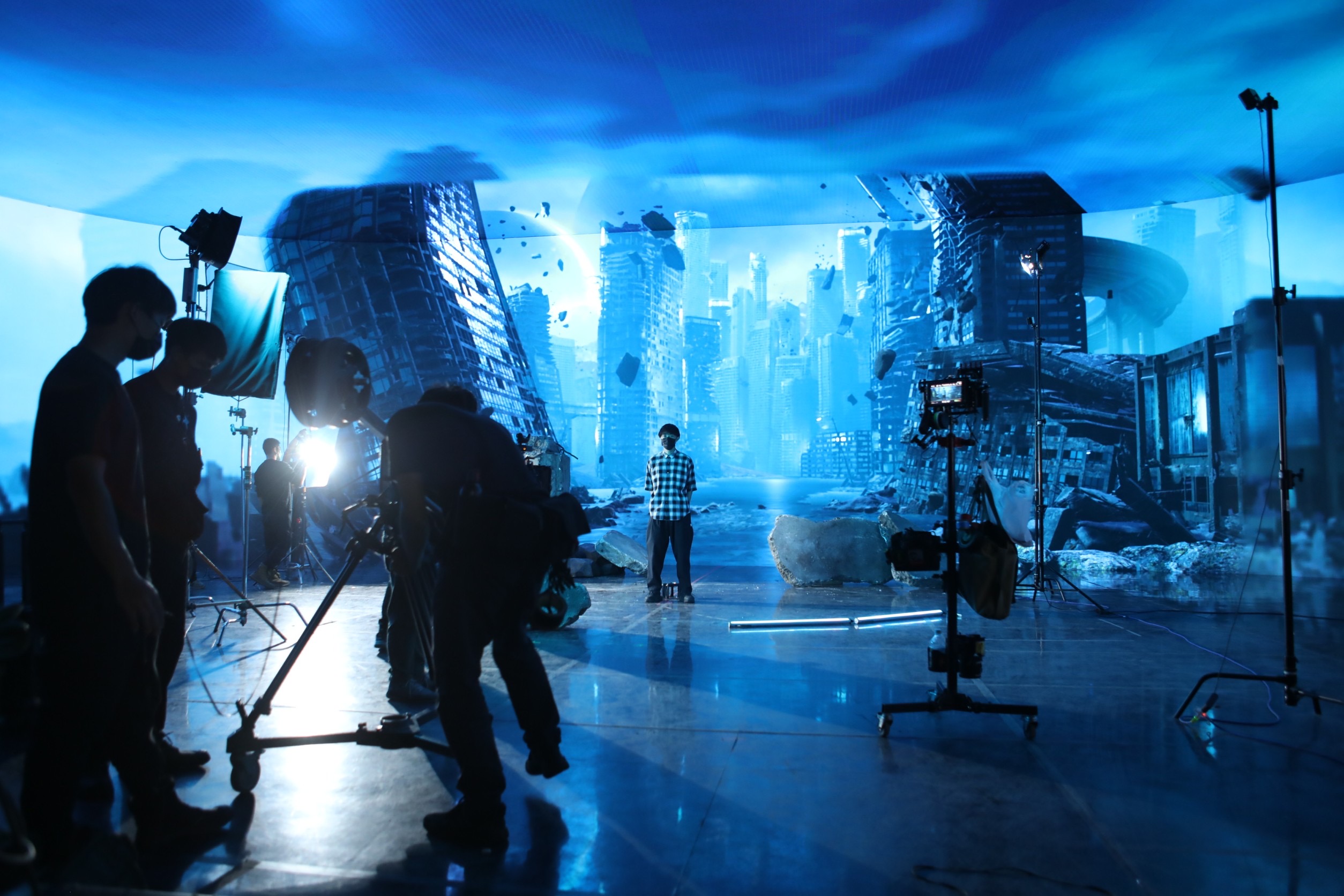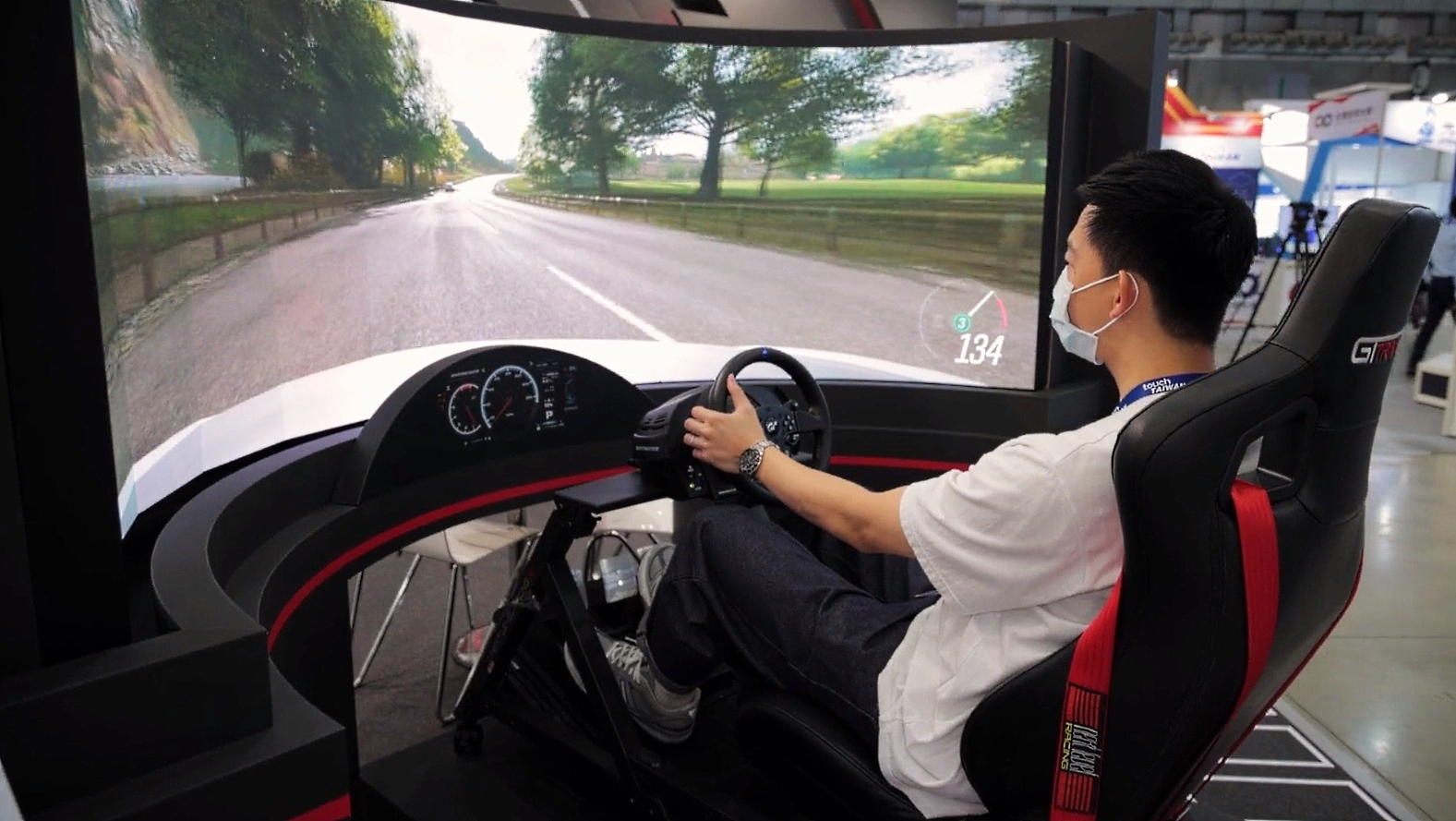The Metaverse and its applications have continued to be in the spotlight among the tech industry worldwide, where tech giants are racing to invest in software–hardware development and explore more possibilities. Currently, virtual and real-world integration has been the major approach to creating the metaverse world, where users can—through different human–machine interfaces—connect the reality to a virtual world to explore various applications.
AR and VR wearables have been crucial equipment for their metaverse plans among most companies, but the existing technologies have yet to balance between immersion and wear comfort. Although VR headsets are able to create excellent immersive experiences, users cannot wear them for a long time because of their considerable weight and motion sickness problem. Projection-based AR glasses are lighter, but wearers can easily be distracted by the surrounding environment, hence their inability to create a genuinely immersive virtual world.
Under such circumstances, glasses-free 3D becomes an alternative approach to the metaverse. Through the use of a curved mid- to large-sized LED display that surrounds users’ field of view (FoV), the technology allows them to immerse themselves in the virtual world without wearing any devices. This method also breaks away from the one-user limitation by creating a large virtual reality scenario, enabling engagement of multiple users at a time.
Immersion coefficient is the key for curved displays to create realistic experiences
Psychologist Mihaly Csikszentmihalyi proposed the flow theory in 1972, arguing that when a person pays full attention to one activity, they tend to enter a mental state where they feel cheerful and pleasant. This theory is one of the inspirations for the research on immersion in VR.
Studies have proved that sight, among the five basic senses, is the most crucial element deciding immersive perceptions. Improving visual immersion is the current development focus for human-machine interfaces to bring the virtual metaverse space to life. Curved LED displays make a perfect choice for virtual applications thanks to their ability to fulfil various immersion-related requirements.
The lifelike visual experiences created by curve LED displays can be quantified using the immersion coefficient. The human eye has a horizontal FoV of about 160° and vertical FoV of around 135°, accounting for one-sixth of a 360-degree panorama. Based on the said principle, Macroblock proposed the vision immersive index formula; specifically, the proportion of the display area to human FoV is calculated to obtain the immersion coefficient. The higher the coefficient, the more lifelike the resultant experience. According to an internal experiment conducted by Macroblock, when the coefficient is greater than 0.3, the display effect can be desirably simulated. As curved displays often come with a high immersion coefficient, they can create better immersive experiences by offering comprehensive visual enclosure, thereby making the virtual metaverse world more plausible.
Additionally, presenting realistic images while maintaining the same viewing distance is another critical element to create immersive experiences. Limited by their flat screen, general displays are prone to distortion at the edge. Unlike flat displays, curved displays—as presented images can enclose the viewer’s peripheral visual field—maintain a constant viewing distance when images are projected on the human eyes at different angles. Such curved design not only reduces distortion at edges but enhances viewing comfort, enabling immersion into a virtual scene.
Breakthroughs of LED display technologies enable reproduction of true-to-life images compatible with diverse simulators
Curved displays capable of presenting lifelike images and highly immersive experience have paved the way for the metaverse’s virtual and real-world integration. Moreover, these displays can fulfil different needs, including the construction of a virtual production studio for filmmaking as well as simulations of transport vehicle operations for training purposes, all of which can reproduce various experiences more realistically.
Following the COVID-19 outbreak, location shooting has been largely limited worldwide, thereby stimulating the demand for virtual production. Using curved LED displays to build a virtual production studio helps create natural, realistic scenes allowing actors and creators to immerse themselves in the desired role. As virtual production can save post-production costs, it has gradually become a favorite in the filmmaking industry. Particularly, fine-pitch curved LED displays can reproduce highly immersive images made of 3D modeling, enabling cameras to capture the virtual world and immerse audience in the atmosphere created by film crews.
For example, the Japan-based virtual production studio Kiyoshumi-Shirakawa Base established by Sony comes with the TV maker’s Crystal LED B curved display, which is able to present realistic UHD scenes. Samsung partnered with entertainment companies in South Korea to tile its Micro LED screens, The Wall, and transform them into an enormous curved display with over 1,000” in size. Renown film studios MoonShine Animation and Makee Studio cooperated with Macroblock to create the first virtual production studio for filmmaking in Taiwan, allowing filmmakers to give full play to their creativity.

Virtual production studio built by MoonShine Animation
Simulators for heavy machinery operators and professional drivers also require a high level of immersion. Drivers must receive simulated training before actually operating any heavy machines, trains, airplanes and vessels so as to ensure safety and correct operation. Simulator equipped with curved LED displays can help largely enhance plausibility and immersion so that users can virtually operate a machine or drive a vehicle as if they are doing so in real life. In flight simulator training, for instance, curved displays can create dynamic scenarios with realistic landforms and climates, allowing the trainee to be fully immersed. In addition to training for general drivers, simulators with curved displays are able to create one-side engine failure, flying in fog, emergency landing and other scenarios which real-world flight training can hardly simulate. In this way, the trainee pilot can respond better in emergencies.
LCDs have been used to produce curved displays for simulators, but the LCD is limited by its border with a clean-cut edge of presented images, consequently making the simulation much less realistic. By contrast, a display tiled using LED modules can achieve 1000R curvature as consumers request with frameless design; the device can fully cover the human eye FoV, creates highly immersive experiences and is compatible with various simulators. Numerous organizations have adopted such curved display, including the Ministry of Labor in Taiwan, which plans to launch a heavy machine operator test using simulators featuring curved LED displays.

Simulator with a curved LED display
Macroblock develops driver ICs for curved LED displays to strengthen simulation immersion
To create a “realistic” virtual world, the curved display in use must be able to reproduce images smoothly and clearly, where LED driver ICs are crucial. Driver IC supplier Macroblock has been developing various solutions for immersion-related applications, including the MBI5264 (the first of its kind), MBI5754, MBI5762 and MBI5265.
The MBI5754 and MBI5762 are common-cathode products—of which the framework comes with a US patent—allowing customers to use them without patent violation concerns. The MBI5754 can achieve the first-class HDR standard with a 64-scan design (16-bit/3,840Hz). The MBI5762, which was exclusively developed for virtual production, is a perfect fit for filmmaking with a design 16 scans/16-bit/7,680Hz/ 240fps. Its proprietary ultra-visual computing technology delivers excellent performance in fixing flaws of scan lines and low grayscale refresh rates.
Additionally, Macroblock unveiled the common-anode MBI5265 compatible with up to a 96-scan design. The product can be applied to fine-pitch displays—normally requiring the use of a large amount of driver ICs—with fewer chips being used. The MBI5265 helps save a total of total of 32,400 driver ICs for a 4K LED display with a pixel pitch of 0.9375mm, which then reduces thermal energy consumption. The specifications can achieve up to 16-bit (grayscale)/7,680Hz (refresh rate); the developer has also optimized the driver IC to mitigate the problem of noticeable high-contrast interference caused by such a high-scan design.
The driver ICs of Macroblock have contributed to the creation of true-to-life scenes as well as unprecedented immersive experiences for users, demonstrating its preparedness for various metaverse applications in the future.













